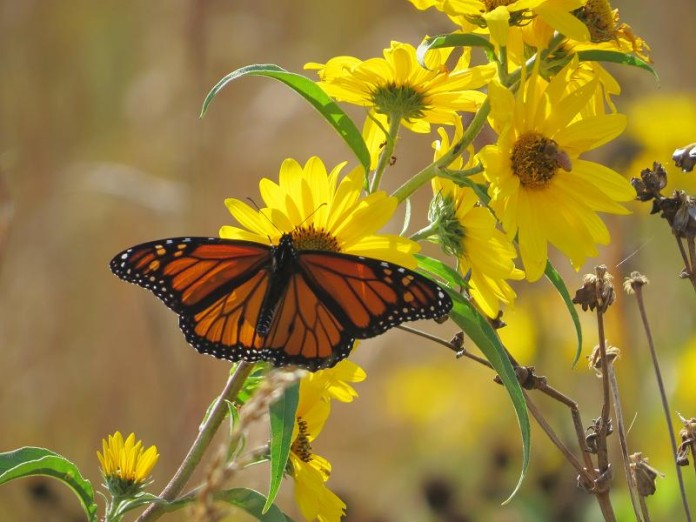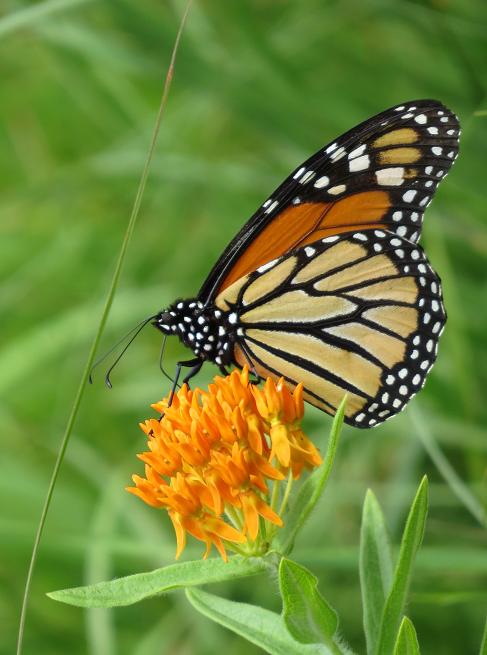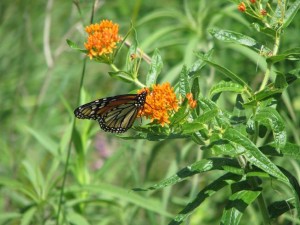

This is the time of year when the monarchs are migrating through Iowa to their winter roost in the Michoacán Mountains west of Mexico City.
The discovery of the monarchs’ winter nesting ground on Jan. 2, 1975, by scientists Ken and Cathy Brugger has been called one of the greatest biological discoveries of the 20th century.
The insects’ remarkable navigation skills puzzled scientists until they found small particles of iron in the insect’s brain cells that are believed to provide them with an internal compass to find their way to Mexico.
The insects spend the winter in a 300-square-mile volcanic mountain range — about one-half the size of Dallas County — that is covered with dense stands of fir trees. The butterfly population in that area is estimated to be 100 million insects in some years. One site alone, measuring 100 yards in diameter, was reported to contain 30 million butterflies.

Dallas Conservation Board Environmental Education Coordinator Chris Adkins has said that in his 20 years of catching and tagging monarchs, about 15 specimens have been recovered in various places in the U.S. In 2001, however, one monarch tagged in Dallas County was later recovered in Mexico. It had flown 1,556 miles to Cerro Pelon Mountain west of Mexico City.
The Kuehn and Voas Conservation Areas are excellent places to see these insects because the reestablished prairies’ late-blooming summer flowers, such as goldenrod, asters, sunflowers and thistle, are favored food of many butterfly species. The prairie also has an abundance of blue prairie sage, another favorite. The nectar from the flowers provides them with the needed energy for the migration south.
The monarchs leaving Iowa in September will not return, but their offspring will, usually about the second week in May, when they are migrating north as far as southern Canada. They follow the growth of the common milkweed — the only plant the monarch caterpillars eat.
Weather is always a factor affecting the butterflies. In 2005 they were blown into Iowa a month early because of a severe spring storm, and many died because the flowers they needed were not in bloom. In 1995 millions were frozen in their winter nesting area by an unusual snow storm in Mexico.
In Iowa the threat to their survival comes from the loss of habitat.
The amount of milkweed plants is being reduced by urban expansion and by chemicals, mowing of ditches, a reduction of “set-aside farm land.” Some scientists also believe genetically modified Bt corn is also detrimental to the insect.
Many scientists predict the monarch butterfly will become a very rare insect or may even become extinct, but scientists in Mexico, Canada and the U.S. are working to prevent the loss of this fascinating insect.
They are using information obtained from butterflies tagged by organizations such as Dallas County Conservation Department to learn more about monarchs and find ways to ensure the butterflies will always be seen flying in the sky during Iowa’s summer. You can also help by letting milkweed grow and using less herbicides and insecticides.
















